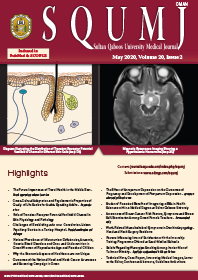Main Article Content
Abstract
Memorising human anatomy structures remains a challenge for nursing students. Educators endeavour to make human anatomy interesting and easy to memorise. Various instructional approaches can be used to help students enhance their memory. Mnemonics, for example, are well-established educational strategies that have proven useful in the encoding, retention and retrieval of anatomical terms. The carpal and tarsal bones are some of the anatomical structures that prove challenging to nursing students’ study of anatomy. Although available online to students, most of the accessible mnemonics are in English and non-native English-speaking students (students who are native Arabic-speakers) might find them difficult to understand. Therefore, we have created two simple Arabic mnemonics that can simplify the memorisation of the carpal and tarsal bones. We believe that Arabic mnemonics effectively enhance memorisation by linking the new learning material to familiar information.
Keywords: Learning; Memory; Anatomy; Nursing; Carpal bones; Tarsal Bones; Oman.
